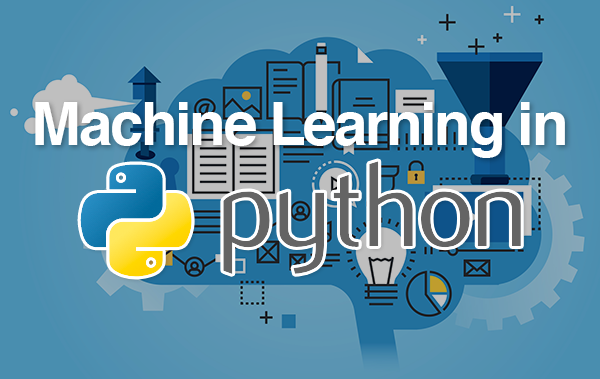
Random Forest Ensembles are a method of ensemble learning that is used to improve the performance of decision tree classifiers. Ensemble learning is a method that combines the predictions of multiple models to improve the overall performance. In this essay, we will go over the steps needed to create Random Forest Ensembles for classification.
The first step is to load the data that you want to classify. This can be done using a library such as Pandas or Numpy. Once the data is loaded, you will need to separate it into two parts: the features and the labels. The features are the variables that will be used to predict the class, while the labels are the classes that the data points belong to.
Once the data is separated, you will need to create a decision tree classifier using the Random Forest algorithm. This can be done using the “RandomForestClassifier()” function in the Scikit-learn library.
The Random Forest algorithm is a variation of the Bagging algorithm, which is a method of creating multiple copies of the decision tree classifier, each of which is trained on a different subset of the data. In Random Forest, each decision tree is grown using a random subset of the features, as well as a random threshold value for each feature. This increases the diversity of the trees in the ensemble, making them more robust to overfitting.
The “RandomForestClassifier()” function also allows you to specify the number of decision tree classifiers in the ensemble, as well as the number of features to be considered when splitting a node in the decision tree.
It’s important to note that Random Forest Ensembles improve the performance of decision tree classifiers by increasing the diversity of the trees in the ensemble, making them more robust to overfitting. They are particularly useful when the data is noisy and has a high degree of variability.
Another important aspect to consider is that Random Forest Ensembles can be used to tune various parameters such as the number of trees in the ensemble, and the number of features to be considered when splitting a node in the decision tree. These parameters can have a significant impact on the performance of the ensemble, and finding the optimal values can take some trial and error.
One of the advantages of Random Forest Ensemble is that it can handle missing values and categorical variables, it does not require the data to be scaled or normalized, and it can be used for both regression and classification problems.
In conclusion, Random Forest Ensembles are a method of ensemble learning that is used to improve the performance of decision tree classifiers. The process involves creating multiple copies of the decision tree classifier, each of which is trained on a different subset of the data using the Random Forest algorithm. Random Forest Ensembles improve the performance of decision tree classifiers by increasing the diversity of the trees in the ensemble, making them more robust to overfitting. They are particularly useful when the data is noisy and has a high degree of variability. Additionally, Random Forest Ensembles can be used to tune various parameters such as the number of trees in the ensemble, and the number of features to be considered when splitting a node in the decision tree. This can be useful to improve the performance of the ensemble. Furthermore, Random Forest Ensemble is a versatile method that can handle missing values and categorical variables, it does not require the data to be scaled or normalized, and it can be used for both regression and classification problems. Additionally, Random Forest Ensemble also provides a feature importance score, which can be used to identify the most important features in the dataset, this can be useful for feature selection and data exploration.
Another important feature of Random Forest Ensemble is that it can handle large datasets with a high number of features, this makes it a suitable algorithm for dealing with high-dimensional data. Moreover, Random Forest Ensemble is also robust to overfitting, it reduces the variance of the predictions by averaging the predictions of multiple decision trees, this improves the generalization of the model.
In summary, Random Forest Ensemble is a powerful method for classification tasks, it is easy to implement, it doesn’t require extensive data pre-processing, it provides feature importance score, it handles high-dimensional data, it reduces the variance of the predictions, and it can be used for both regression and classification problems.
In this Applied Machine Learning & Data Science Recipe (Jupyter Notebook), the reader will find the practical use of applied machine learning and data science in Python programming: Random Forest Ensembles for Classification.
What should I learn from this recipe?
You will learn:
- Random Forest Ensembles for Classification.
Random Forest Ensembles for Classification:
Disclaimer: The information and code presented within this recipe/tutorial is only for educational and coaching purposes for beginners and developers. Anyone can practice and apply the recipe/tutorial presented here, but the reader is taking full responsibility for his/her actions. The author (content curator) of this recipe (code / program) has made every effort to ensure the accuracy of the information was correct at time of publication. The author (content curator) does not assume and hereby disclaims any liability to any party for any loss, damage, or disruption caused by errors or omissions, whether such errors or omissions result from accident, negligence, or any other cause. The information presented here could also be found in public knowledge domains.
Learn by Coding: v-Tutorials on Applied Machine Learning and Data Science for Beginners
Latest end-to-end Learn by Coding Projects (Jupyter Notebooks) in Python and R:
Applied Statistics with R for Beginners and Business Professionals
Data Science and Machine Learning Projects in Python: Tabular Data Analytics
Data Science and Machine Learning Projects in R: Tabular Data Analytics
Python Machine Learning & Data Science Recipes: Learn by Coding